

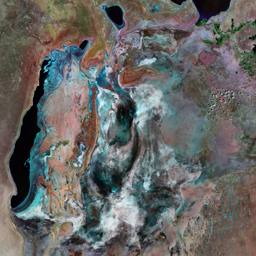

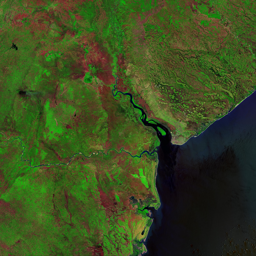


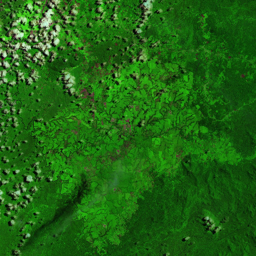

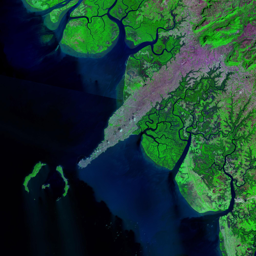
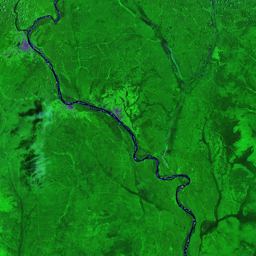
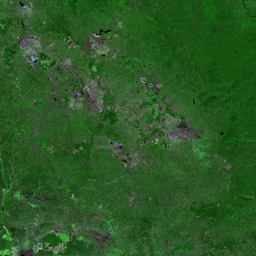
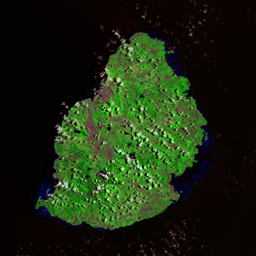
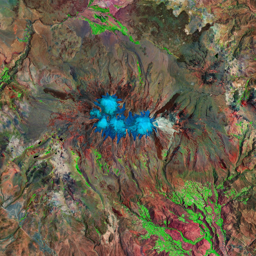


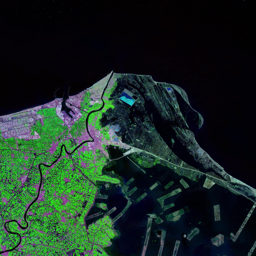
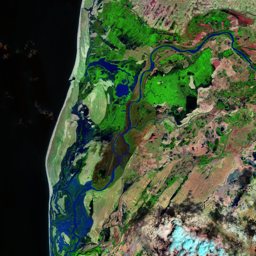


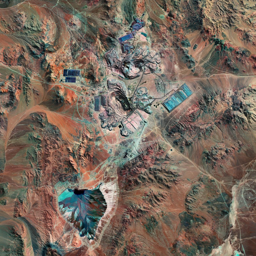
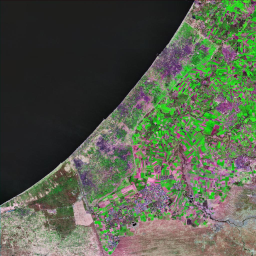



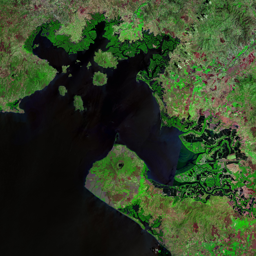

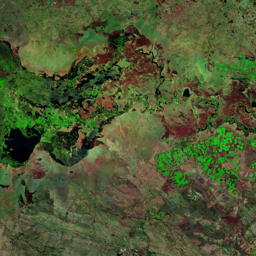
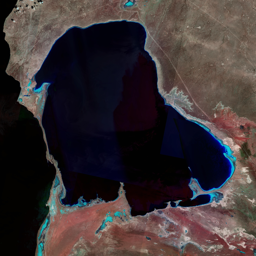
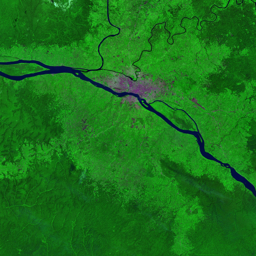


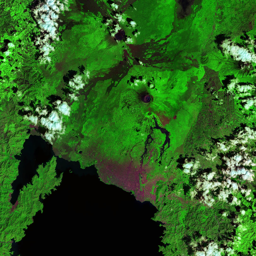

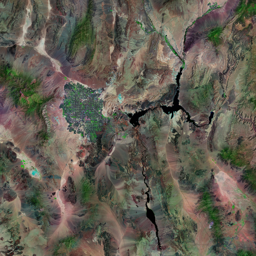
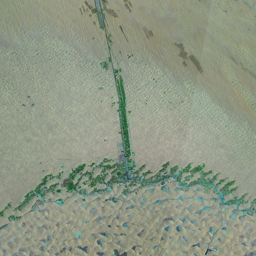
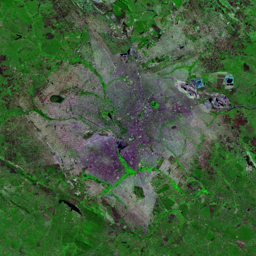
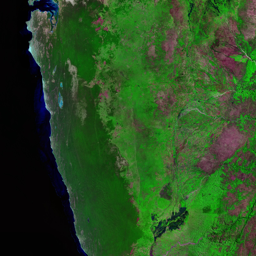


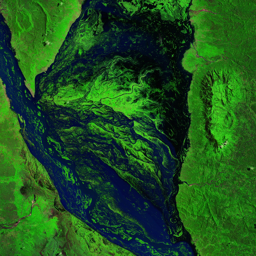







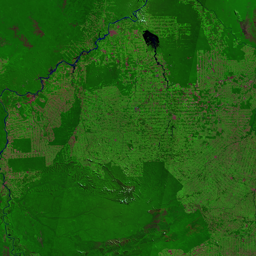
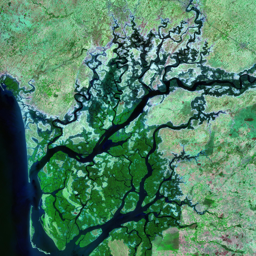
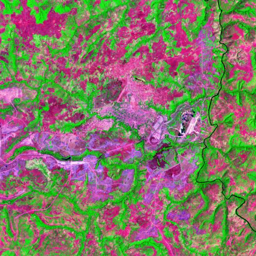
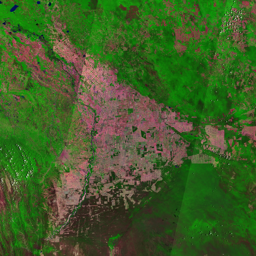
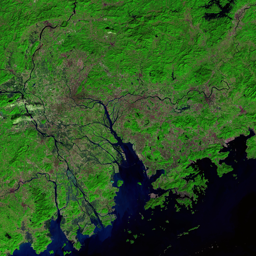

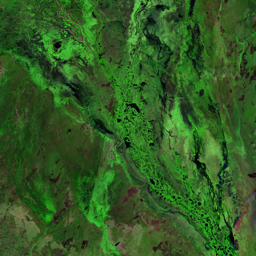



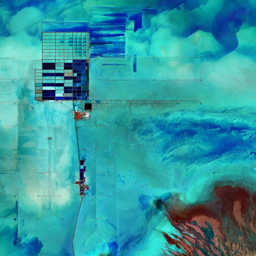
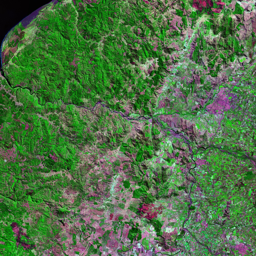

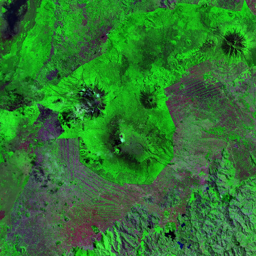
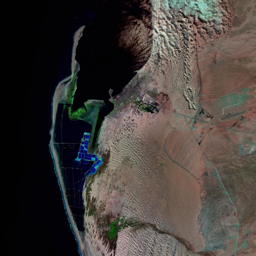

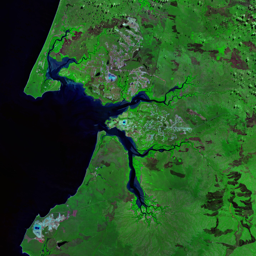
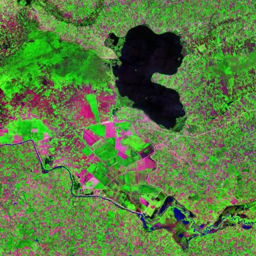
Honduras is second only to Ecuador in the production and export of cultured shrimp from Latin America. Vast areas of the delta formed by the Choluteca and the Estero Real Rivers have been converted into farms for the cultivation of shrimp. The rapid growth of shrimp aquaculture in Honduras has caused both environmental and social problems. Shrimp farmers are depriving fishers, farmers and others of access to mangroves, estuaries and seasonal lagoons; destroying mangrove ecosystems, altering the hydrology of the region, destroying the habitats of other flora and fauna and precipitating declines in biodiversity; contributing to degraded water quality; and exacerbating the decline in Gulf fisheries through the indiscriminate capture of other species caught with the shrimp post larvae that are used to stock ponds. These images provide a visual comparison of the increase in coverage by shrimp farms in the Gulf of Fonseca over time. The shrimp ponds appear as dark blue rectangles near the water line scattered across the delta. It is evident from the images that between 1986 and 2022, a period of about 36 years, the total area under shrimp farming has increased tremendously.
Use shift + scroll to zoom the map
Use shift + scroll to zoom the map